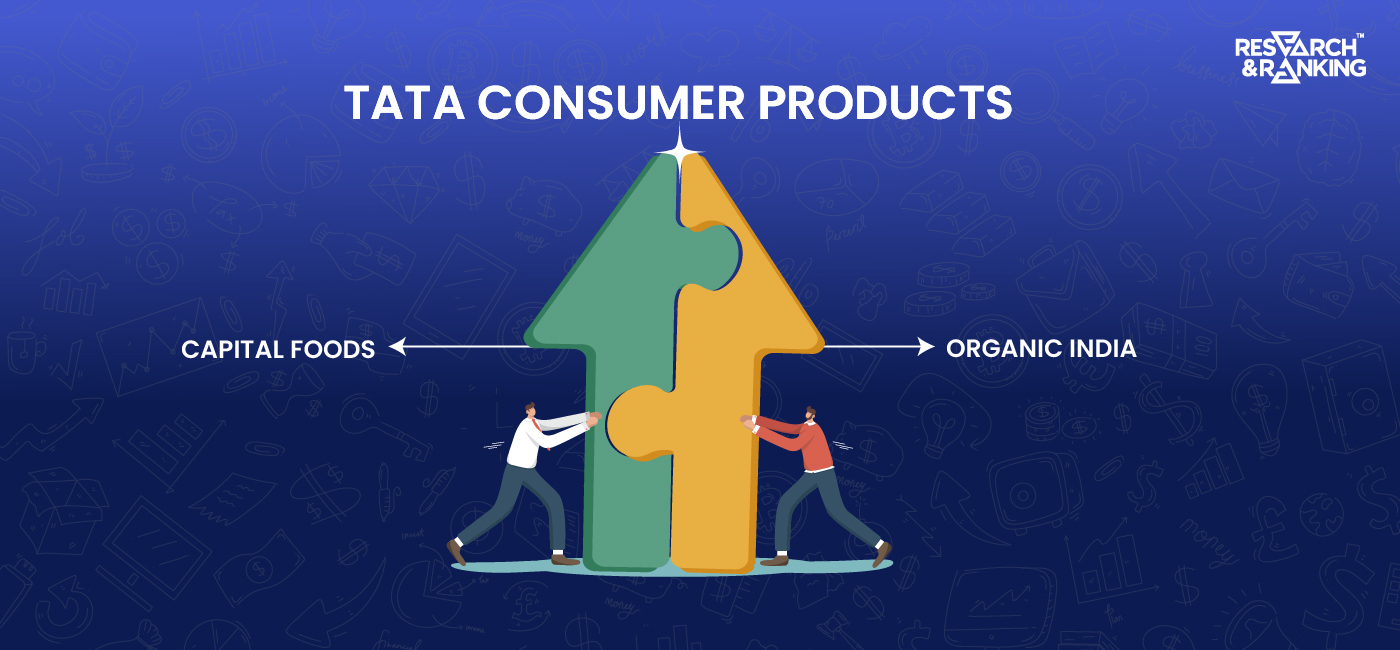Introduction
In a bold move to solidify its position in the burgeoning Health & Wellness sector, Tata Consumer Products recently inked definitive agreements to acquire two prominent Indian entities, Capital Foods and Organic India. This strategic maneuver is poised to transform Tata Consumer into a formidable player in the packaged foods category of the FMCG business, marking a significant shift from its traditional focus on salt, tea, and coffee.
How Will Investors Benefit from These Acquisitions?
Tata Consumer Products envisions a substantial addressable market size for the acquired brands, providing a lucrative opportunity for investors. As the company transforms into a major player in the packaged foods category and continues its expansion into high-margin categories, investors may witness significant returns on their investments in the foreseeable future.
The Acquisition Details
Tata Consumer Products has set the stage for a paradigm shift in its business portfolio by acquiring Capital Foods and Organic India. The conglomerate invested a substantial INR 51 billion (approx. $614 million) in Capital Foods and an additional INR 19 billion (approx. $229 million) in Organic India, expanding its reach into diverse markets and product segments.
The Capital Foods Deal
In this strategic move, Tata Consumer secured 75% of the equity shareholding of Capital Foods upfront, with plans to acquire the remaining 25% within the next three years. Capital Foods, a Mumbai-based company with nearly three decades of legacy, boasts popular brands such as Ching’s Secret and Smith & Jones. The acquisition aligns seamlessly with Tata Consumer’s expansion strategy, especially in high-margin categories.
Organic India Acquisition
Simultaneously, Tata Consumer inked definitive agreements to acquire up to 100% of the issued equity share capital of Organic India, a robust brand in the BFY (Better For You) organic space. Founded in 1997, Organic India supplies its products to over 40 markets, including notable US retailers like Whole Foods Market and Sprouts Farmers Markets. This acquisition positions Tata Consumer to tap into the growing Health & Wellness segment.
Strategic Intent and Market Opportunities
Capital Foods Integration
Sunil D’Souza, MD & CEO of Tata Consumer Products, emphasized that the Capital Foods acquisition is a strategic fit, expanding the conglomerate’s market presence. With Capital Foods’ widespread availability in 3.4 lakh outlets, Tata Consumer aims to leverage its extensive distribution network, providing a substantial runway for growth. Analysts estimate the business could reach INR 1,700 crore in FY26 with an EBITDA margin exceeding 25%.
Organic India’s Health & Wellness Platform
Organic India’s strong relationships with farmers and robust organic supply chain will let Tata Consumer accelerate its growth momentum in the Health & Wellness sector. The acquisition creates a platform that aligns seamlessly with Tata Consumer’s objectives, presenting exciting market opportunities in the rapidly growing health and wellness segment.
Financial Snapshot and Industry Positioning
Over the past five years, Tata Consumer Products has witnessed an impressive annual stock price growth of 46%, outperforming FMCG majors ITC and HUL. Analysts believe despite trading at a price-to-earnings (PE) multiple of 83x, considered by many as expensive, Tata Consumer is at a pivotal point in its journey, eyeing a transformation from a traditional FMCG player to a dominant force in the packaged foods category.
The Growth Trajectory
Tata Consumer Products envisions a substantial addressable market size for Capital Foods’ brands, estimating it at around INR 21,400 crore. This positions Capital Foods as a leader in the condiments category of packaged foods. With this acquisition, TCPL will become the sixth Tata Group company to cross a market capitalization of INR 1 lakh crore.
Category Expansion and Future Prospects
With brands like Ching’s Secret and Smith & Jones, Capital Foods opens avenues for Tata Consumer to directly compete with industry giants like Nestlé and ITC. This foray into the fast-growing non-Indian cuisines segment aligns with Tata Consumer’s focus on acquiring fast-growing brands, mirroring ITC’s previous strategy.
Tata Consumer Products’ recent acquisitions of Capital Foods and Organic India mark a pivotal moment in the company’s evolution. With a strategic focus on health and wellness, Tata Consumer is expanding its product portfolio and transforming into a significant player in the fast-paced world of packaged foods. As the company diversifies its offerings and taps into emerging markets, investors may find themselves on the cusp of a lucrative opportunity with Tata Consumer Products.
Know more about EPACK DURABLES LTD IPO
*Disclaimer Note: The securities quoted, if any, are for illustration only and are not recommendatory. This article is for education purposes only and shall not be considered as recommendation or investment advice by Research & Ranking. We will not be liable for any losses that may occur. Investment in securities market are subject to market risks. Read all the related documents carefully before investing. Registration granted by SEBI, membership of BASL, and certification from NISM in no way guarantee the performance of the intermediary or provide any assurance of returns to investors.
FAQs
What synergies are expected from these acquisitions?
The acquisitions are anticipated to yield substantial synergy benefits in distribution, logistics, and overheads. Additionally, the move is expected to drive portfolio premiumization and open up new channels and markets for Tata Consumer Products.
How does Tata Consumer plan to integrate Capital Foods into its existing operations?
Tata Consumer plans to acquire 75% of the equity shareholding of Capital Foods upfront, with the remaining 25% to be acquired within the next three years. The integration aims to leverage Tata Consumer’s distribution strength, multiplying Capital Foods’ business tenfold in distribution in the next two years.
What impact do these acquisitions have on Tata Consumer’s financials?
While analysts may perceive Tata Consumer Products’ current valuation as relatively high, the acquisitions of Capital Foods and Organic India are potentially significant for the company. The move is expected to add 7% to TCPL’s revenue and 12% to its EBITDA based on FY23 numbers, positively impacting its financial performance.
















